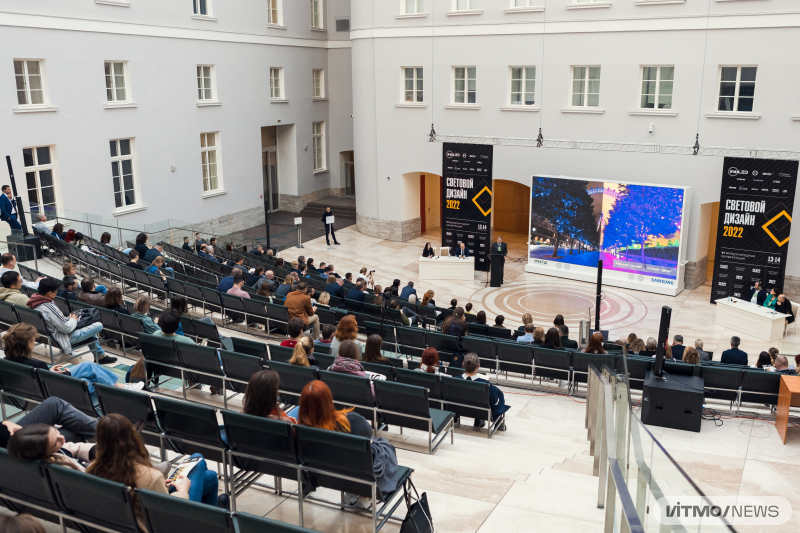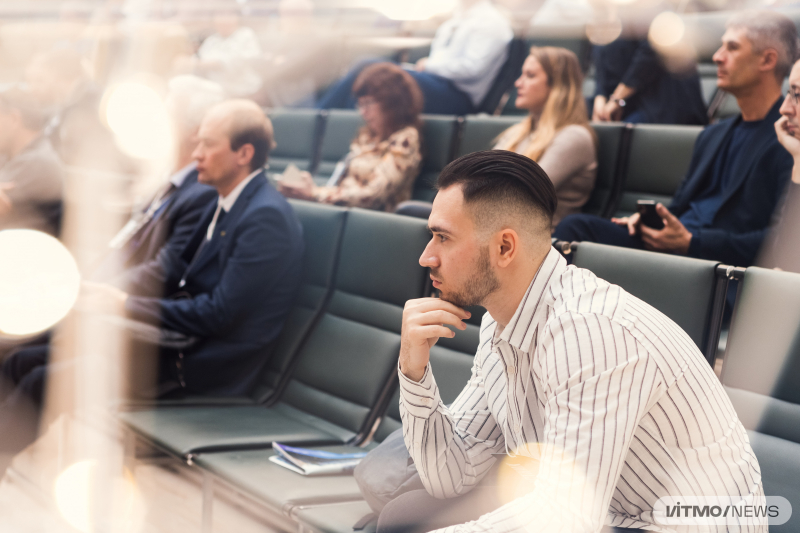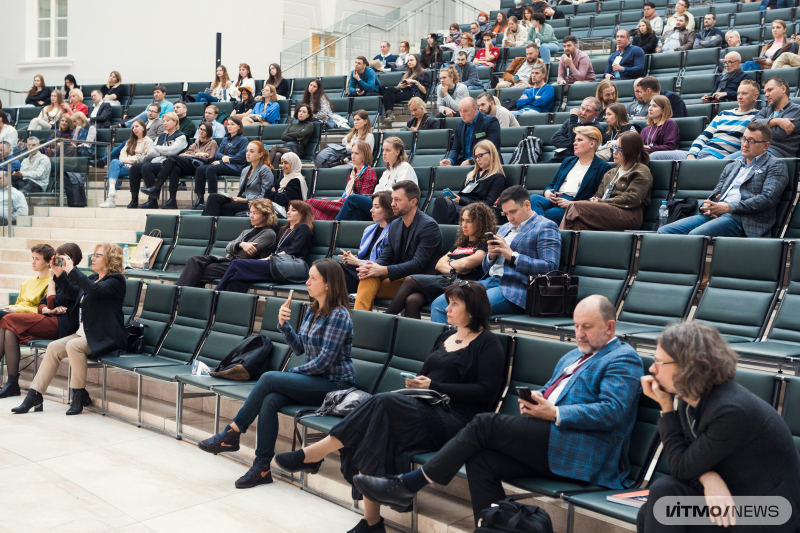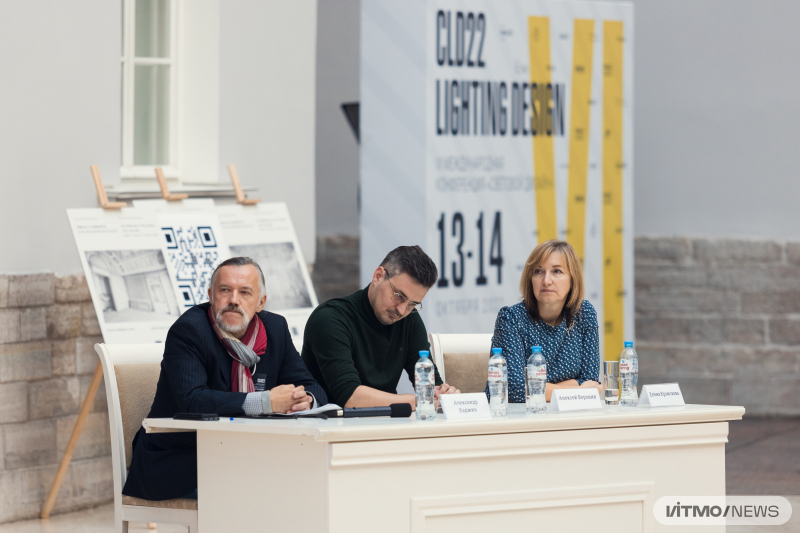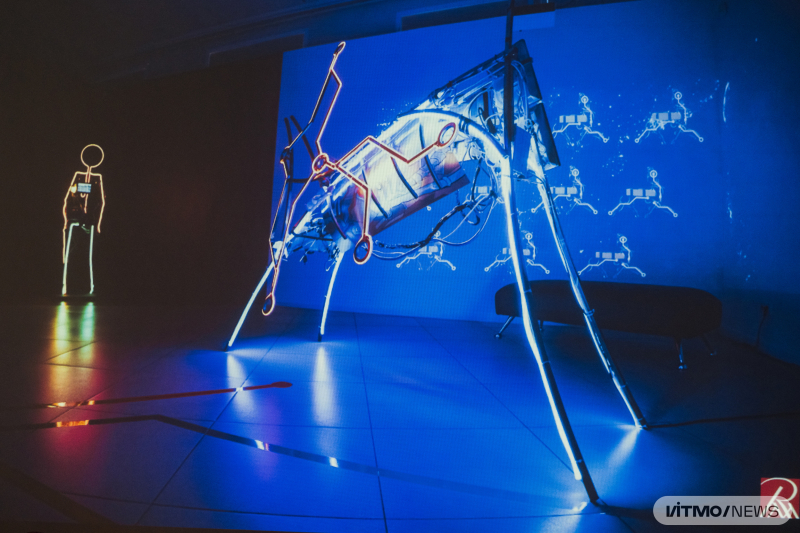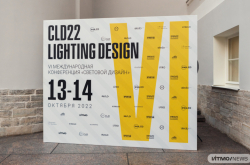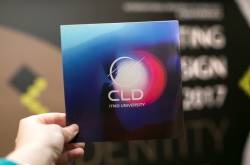Smart city lights
Though uniform outdoor lighting is proven to help people feel more comfortable and safe in an urban environment, city and district authorities who are, in fact, responsible for urban power supply often adjust the lighting based on their own perceptions, standards, and laws – hence, the image of the city is made less organic, attractive, and comfortable for residents and tourists alike.
“We’re eager to take our system to the next level by ensuring a proper legal framework for its long-term operation. We have to flesh out the process of lighting design so that it could carry on even without one of the parties involved, be it an official or a lighting designer. The issue of lighting concerns all of us, as it’s an integral part of a comfortable urban environment,” highlights Natalya Bystryantseva, the head of the conference’s organizational committee and the head of ITMO’s Creative Lighting Department.
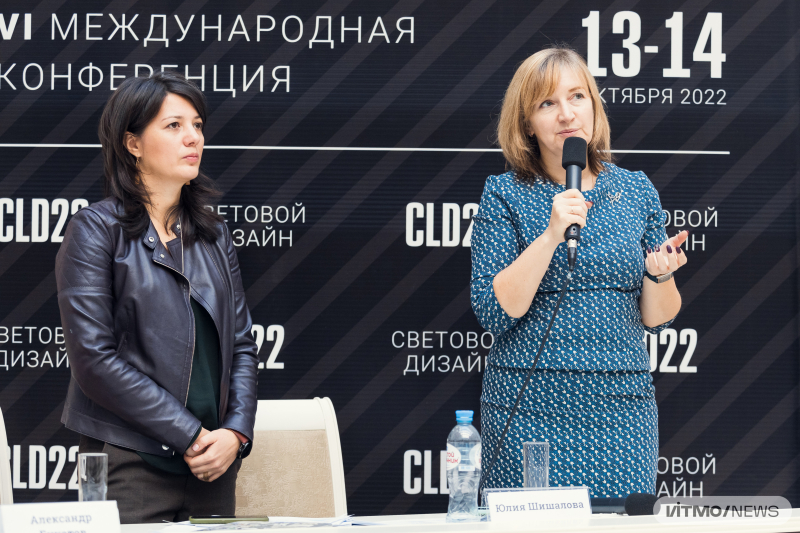
Natalya Bystryantseva and Elena Kramskova. Photo by Dmitry Grigoryev / ITMO.NEWS
At the conference, Natalya Bystryantseva and Elena Kramskova, the acting deputy chair of the Committee on Urban Planning and Architecture of St. Petersburg, presented the methodological materials and guidelines on the architectural and artistic image of the city that were based on the results of surveys held by the university’s lighting experts. Having analyzed urban lighting in 18 city districts, the specialists proposed their recommendations on, for instance, how to apply light to bring people’s attention to significant cultural sites and visually merge them into a single unit, how and where the lighting should be adjusted, and what can be done to reduce light pollution.
The proposed recommendations are meant to help lighting designers build a unified outdoor lighting layout that would emphasize the unique urban environment and attract people to the city’s main landmarks and public spaces. As noted by ITMO experts, these guidelines will also be of help when trying to harmoniously combine permanent lighting solutions with temporary ones, such as New Year’s decorations, and let city dwellers and tourists create new safe walking routes with ease.
Experts from the lighting design company INTILED believe that modern architectural lighting is about how light interacts with not only buildings and objects, but people, too. User experience is especially critical when speaking about cultural and leisure facilities. Light brings comfort, warmth, and other emotions, as well as helps developers to communicate their message and generate a particular mental and even physical state – be it relaxation, excitation, sadness, or joy – in people.
“Our lighting systems should evoke images and memories that are unique for each person yet strongly tied to a certain location, thus making them want to come back here again and again. We’ve long been working with cultural sites and popular venues, which are both exciting and challenging to deal with,” notes a statement from the company.
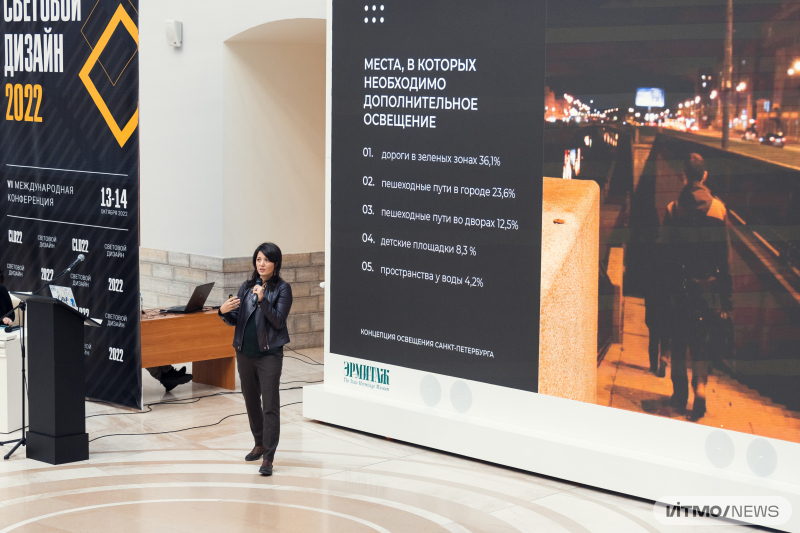
Natalya Bystryantseva. Photo by Dmitry Grigoryev / ITMO.NEWS
The methodological materials and guidelines will be published on the official website of St. Petersburg’s Committee on Urban Planning and Architecture of St. Petersburg by the end of the year, whereas the new lighting system will be fully implemented by late 2030. After all, the system can’t be implemented in full without adapting the recommendations further to accommodate St. Petersburg’s lighting culture, attracting various specialists from other fields, and adopting a comprehensive approach to the problem of lighting of urban objects. Natalya Bystryantseva also noted that it’s highly important to understand which locations indeed require lighting solutions and gradually move away from the idea of “the more light, the better.”
Read also:
Smart Light: ITMO Researchers and Students Create Lighting System That Adapts to How Its Users Feel
ITMO Co-Organizes International Conference on Lighting Design
Lighting Design Conference: A Bright Future For St. Petersburg
Custom lighting
The designers suggested making changes not only to urban but also interior lighting. One of the university’s research teams, namely scientists from ITMO’s Cognitive Non-Verbality Laboratory (part of the National Center for Cognitive Research), has been working on an adaptive lighting system since last year. Svetlana Roslyakova, an assistant at ITMO’s Institute of Design & Urban Studies and a lecturer of ITMO’s Lighting Design Master's program, as well as a member of the professional lighting design association RULD, is sure that the true value of this project is that such systems can make people feel better by adjusting to external factors and the users’ needs. That is, they can prolong daylight in wintertime, provide the right color temperature, or set a well-balanced work rhythm.
What’s more, lighting can affect people’s emotional state, help them get into a working mood, reduce stress, and even prevent burnout. According to Olga Gofman, PhD, a soft skills lecturer at ITMO’s Institute of International Development and Partnership, an experiment showed that standard light sources (300 lux, 4,000 degrees Kelvin) work best between 11 AM and 4 PM and subdued light (275 lux, 2,700 degrees Kelvin) helps employees avoid a productivity slip after lunch, while active (675 lux, 6,100 degrees Kelvin) and concentrated light (1,060 lux, 5,800 degrees Kelvin) helps achieve a burst of energy, but shouldn't be used for long stretches of time.
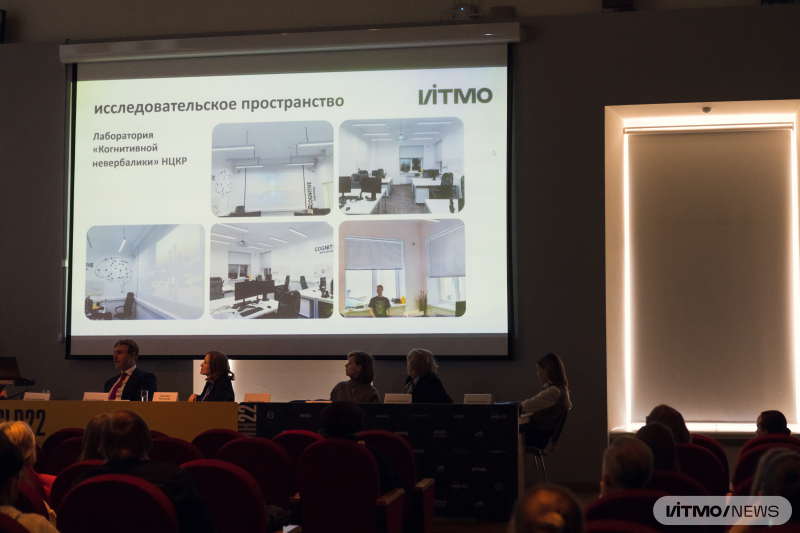
The 6th Lighting Design Conference. Photo by Dmitry Grigoryev / ITMO.NEWS
People and birds
When creating lighting installations and solutions, developers should take into account the aesthetics as well as the technical qualities, while at the same time ensuring their product’s safety. Children’s eyes, for instance, aren’t fully developed, meaning that when exposed to ultraviolet radiation, their lenses lose their elasticity, which can, in turn, lead to the early development of cataracts or other eye problems.
The same is true for older generations. Lipofuscin granules or the so-called aging pigment tend to accumulate in pigment epithelium over time. Their contact with ultraviolet light causes the formation of toxic forms of oxygen, which can damage epithelial cells and worsen eye conditions. One of the ways to prevent such a problem is to use warm light in rooms, recommends Mikhail Ostrovsky, DSc, a member of the Russian Academy of Science.
People, nevertheless, are not the only urban dwellers that need certain lighting. As stressed by Ivan Novitsky, PhD, a researcher at the Helmholtz Moscow Research Institute of Eye Diseases, constant use of artificial light disrupts natural light patterns and increases stress levels in birds, altering their mating and hunting behaviors. As a result, the animals are forced to leave their habitat. Notably, birds can see more colors and frames per second than humans, which makes them suffer greatly from flickering and colorful lights. People, in turn, feel more comfortable when exposed to assorted monochrome light with a higher color rendering index (CRI>90) and warm color temperature (2,300-4,000 degrees Kelvin for people and 2,500-3,500 degrees Kelvin for birds).
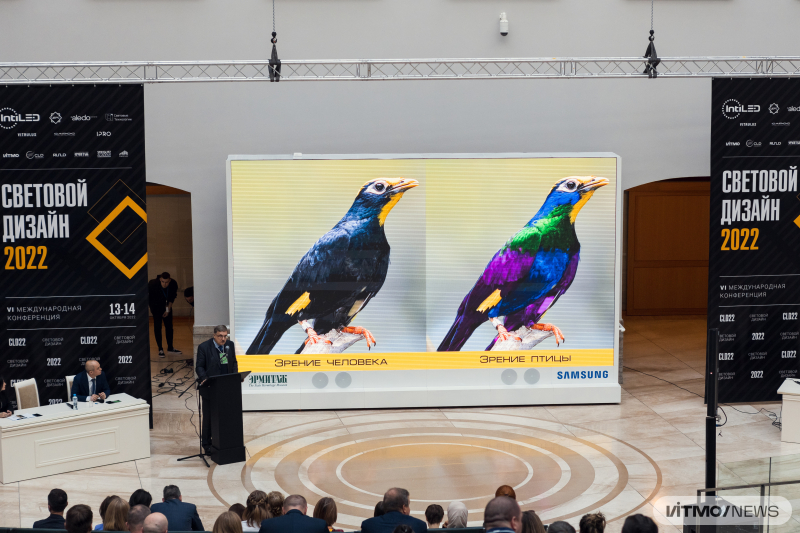
Ivan Novitsky. Photo by Dmitry Grigoryev / ITMO.NEWS
About the conference
The Lighting Design Conference has been held since 2014. This year, it was organized by ITMO University, ITMO’s Creative Lighting Department, the professional lighting design association RULD, the State Hermitage Museum, the St. Petersburg Stieglitz State Academy of Art and Design, and the digital art gallery Zifergauz with the support of the Federation Council of the Federal Assembly and the Government of St. Petersburg. Among the event’s partners were the companies INTILED, ZERS, aledo, Lighting Technologies, Vitrulux, Saros, and IPRO. In 2022, the conference brought together around 1,500 Russian and international representatives of governments, business, science, medicine, and art, as well as various lighting experts, including architects, designers, engineers, urban planners, and artists. Over the course of two days, the participants discussed cases, trends, and modern challenges associated with urban environments, interior design, culture, and education.
“Today’s world requires us to be more efficient and sustainable with resources. We can’t adopt a new lighting approach without professional solutions. At the conference, we had the chance to discuss light in all environments, from city streets to museums. We want to improve the quality of our lighting design since it has a direct impact on our lives, health, emotional state, and communication with one another,” says Natalya Bystryantseva.
